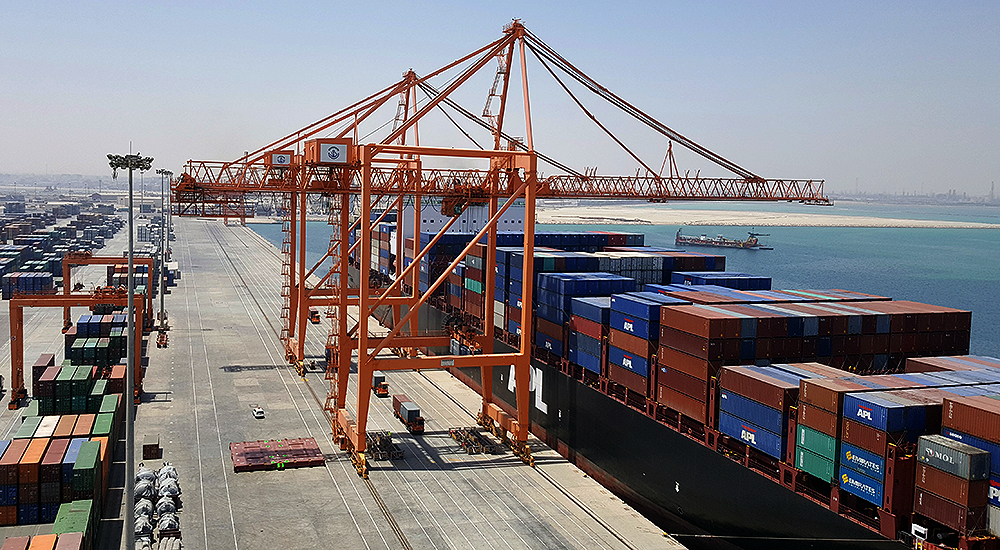As the organisation responsible for management of three major port container and bulk terminals in Saudi Arabia, Gulf Stevedoring Contracting Company is fully committed to supporting the government’s Saudi Vision 2030 agenda for economic diversification. Scalable, reliable and easy to manage IT systems are recognised as key to delivering this agenda, which meant the company would have to both virtualise existing workloads and replace its end-of-life physical infrastructure with more flexible and scalable hyper-converged solution to cope with predicted increases in customer demand.
In order for port management specialist, Gulf Stevedoring Contracting Company, to meet its commitment to the ambitious Saudi Vision 2030 agenda for economic diversification, it needed to make big changes to its IT. Virtualisation was a real priority as was replacement of the legacy 3-tier server plus storage hardware in its datacentre.
With three port terminals operations to manage, the company was also keen to migrate to a solution that would integrate management of all physical and virtual resources through a single interface as well as provide tools to enhance the resiliency of its IT infrastructure.
Following a comprehensive evaluation of hyper-converged solutions from a number of vendors, the team at GSCCO decided on Nutanix Enterprise Cloud with implementation in two phases. The first involved installation of a primary Enterprise Cloud cluster in the GSCCO datacentre, followed by virtualisation of as many server workloads as possible, then subsequent decommissioning of the legacy hardware once the new software and client workloads were fully operational.
The second phase required building of disaster recovery facility at the company’s Jeddah Islamic Port location equipped with a second Enterprise Cloud cluster to be used for snapshot replication, backup and disaster recovery using tools included as standard in the Nutanix software stack.
The full installation was completed in late 2016, since then the company has put the promised scalability to the test by adding additional nodes to cope with growing IT demands in each of the following years. With the previous infrastructure this would have required weeks of planning to cope with the disruption and possible downtime that would have ensued. With the Nutanix Enterprise, it was a trouble-free exercise.

As part of the migration to the Nutanix Enterprise Cloud, Hossam El-Masry, Information Technology Manager at GSCCO and his team have virtualised all of the GCSSO workloads leaving just a handful of legacy systems with specific hardware dependencies. This has led to a significant increase in performance and greater capacity. It has also allowed the port operator to reduce rack occupancy by a full 1.5 racks, in turn, leading to a significant reduction in associated power and cooling overheads.
The support team, too, has benefited by being able to manage the two sites and all physical and virtual resources from one Nutanix Prism console. Moreover, the support team no longer need specialist storage management skills and are able to spend more time supporting users and planning for further developments.
In the short term it is business as usual with El-Masry and his team focused on further expanding the Enterprise Cloud deployment to cope with continued growth. Looking to the future the company is evaluating possible use of public cloud services, process automation and support for the Internet of Things and is doing so confident in the knowledge that the Nutanix Enterprise Cloud is uniquely equipped to enable them to take advantage of these and other new technologies and do so at minimal risk and expense.
“We wanted a solution that would deliver linear scalability to handle predicted rapid growth in container traffic,” explaines El-Masry. “We were also looking for greater resiliency and the ability to upgrade and manage the infrastructure without any downtime or impact in any way on the level of service provided to staff and customers at the ports we manage.”
“With zero downtime even during major capacity upgrades, migration to Nutanix Enterprise Cloud has revolutionised our IT infrastructure, making it quicker, more reliable and much easier to both scale and manage. We could not have handled the recent growth in container traffic without it.”
“Not only have we saved on capital IT spending, we have also achieved a saving of around 15% in terms of OpEx. We have also been able to bring new developments online earlier than planned including recent major upgrades to our Navis N4 Terminal Operating System and EmPower employee performance management systems needed to cope with the extra container traffic expected going forward.”
“The Enterprise Cloud delivered fully on its promise of cloud-like scalability, enabling us to add additional nodes in hours rather than days or even weeks with the old hardware, and with no downtime. We now also have a much more resilient infrastructure, allowing us to keep the ports running at all times with no disruption in service during maintenance and rapid failover to our recovery site to enable us to keep the ports working should we suffer a power outage or other problem.”


Key takeaways
Strategy
- Agile and scalable IT infrastructure to keep pace with 50% growth in container port traffic.
- The company is evaluating use of public cloud services, process automation, support for Internet of Things.
Execution
- Availability and failover using built-in snapshot and replication tools across Enterprise Cloud clusters.
- Scale operations to two separate datacentres.
Cost
- 15% saving on IT operational expenditure through reduction in rack occupancy, lower power requirements, savings in support.
- Support team no longer need specialist storage management skills.
























